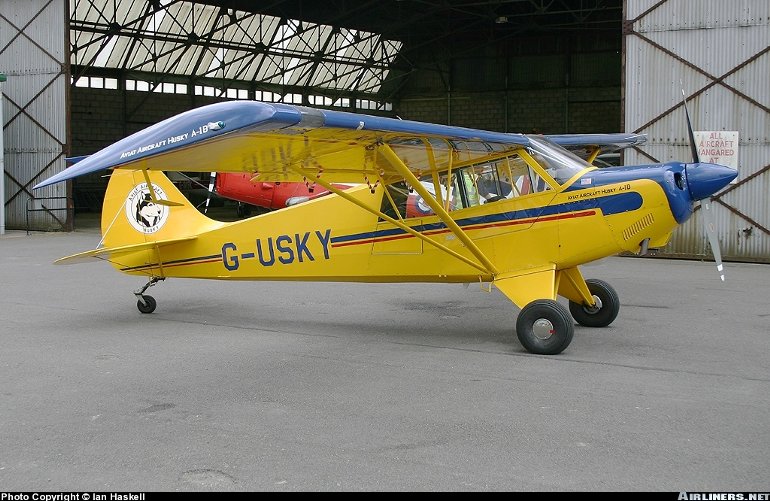Aircraft Technical Data
Aviat A-1 Husky


| Details | |
| Country of Origin | United States of America |
| Type | Two seat utility light aircraft |
| History | The Aviat Husky utility has the distinction of being the only all new light aircraft designed and placed into series production in the United States in the mid to late 1980s. Similar in configuration, appearance and mission to Piper's venerable Super Cub, the Husky is a much later design, being first conceived in the mid 1980s. The Husky was originally designed by Christen Industries, the company also responsible for the kit built Christen Eagle aerobatic biplane and previous owner of the Pitts Special aerobatic biplane series (described separately, Aviat now owns Pitts and Christen). Initial design work on the Husky began in late 1985, the aircraft being one of the few in its class designed with the benefit of Computer Aided Design. The prototype Husky flew for the first time in 1986, and the US FAA awarded certification the following year. Production deliveries followed shortly afterwards. Design features of the Husky include a braced high wing, seating for two in tandem and dual controls. This high wing arrangement was selected for good all round visibility, essential for the many observation and patrol roles the Husky is suited for. Power is supplied by a relatively powerful, for the Husky's weight, 135kW (180hp) Textron Lycoming O360 flat four turning a constant speed prop. The good power reserves and wing also give good field performance. Unlike most current light aircraft the Husky's structure features steel tube frames and Dacron covering over all but the rear of the fuselage, plus metal leading edges on the wings. Options include floats, skis and banner and glider hooks. With more than 450 sold since production began, the Husky has also quietly gone about becoming one of the largest selling light aircraft GA designs of the 1990s. Many of the aircraft are used for observation duties, fisheries patrol, pipeline inspection, boarder patrol, glider towing and a range of other utility missions. Notable users include the US Departments of the Interior and Agriculture and the Kenya Wildlife Service which flies seven on aerial patrols of elephant herds as part of the fight against illegal ivory poaching. |
| Powerplants | One 135kW (180hp) Textron Lycoming O360C1G flat four piston engine, driving a two blade constant speed Hartzell propeller. |
| Performance | Cruising speed at 75% power 225km/h (122kt), cruising speed at 55% power 212km/h (115kt). Stalling speed with flaps extended 67km/h (37kt). Initial rate of climb 1500ft/min. Service ceiling 20,000ft. Range with max fuel and reserves at 75% power cruising speed 1020km (550nm). |
| Weights | Empty 540kg (1190lb), max takeoff 817kg (1800lb). |
| Dimensions | Wing span 10.73m (35ft 3in), length 6.88m (22ft 7in), height 2.01m (6ft 7in). Wing area 16.7m2 (180.0sq ft). |
| Capacity | Typical accommodation for two in tandem. |
| Production | Approximately 450 Huskies had been delivered by late 1998, many for US government agencies and police. |
| Related Links | Aviat A-1 Husky |
The backbone of this section is from the The International Directory of Civil Aircraft by Gerard Frawley and used with permission. To get your own copy of the book click here. |
|








